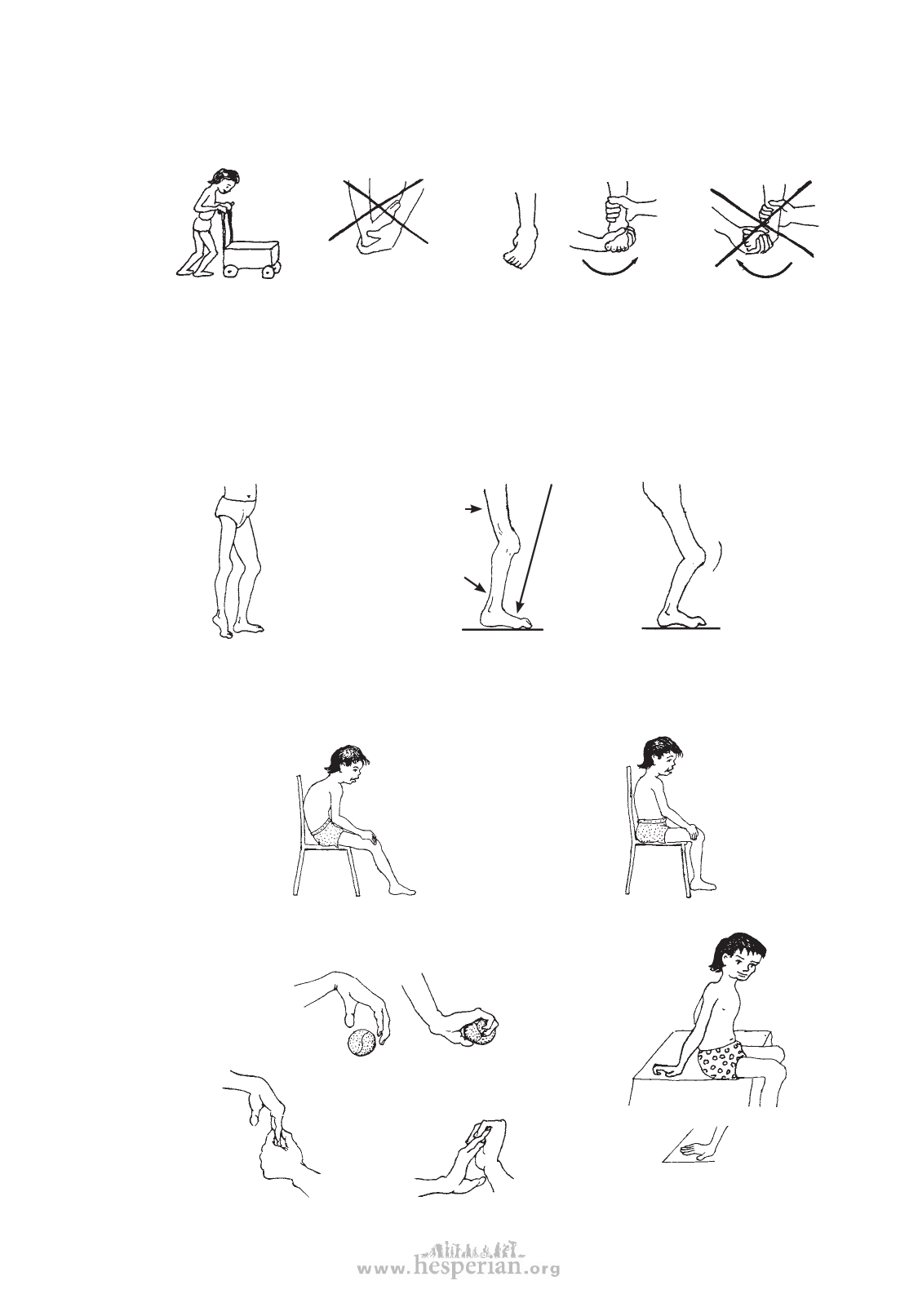
EXERCISES
5. Do not do exercises that will increase the range of motion of joints that are ‘floppy’
or that already bend or straighten more than they should.
If a child
has ankles
that
already
bend up
too much,
do not do
ROM or
stretching
exercises
that pull
the foot
up.
Or if a child’s
foot bends
in more than
normal, but
does not
bend out,
do exercises
to bend
the foot
out,
but do not do
exercises that
bend the foot
in.
375
Do exercises in the opposite direction of the deformity or contracture, so that
they help to put the joint into a more normal position.
6. Before doing exercises to increase the range of motion in certain joints, consider
whether the increased motion will make it easier for the child to do things.
Sometimes, certain contractures or joint stiffness may actually help a child to do
things better.
For example,
a child with
a short leg
may walk
better if a
tight heel
cord keeps
his foot in
a tiptoe
position.
Similarly, a
child with
paralysis in the
thigh muscles
may actually walk
better if a tight
heel cord
prevents his foot
from bending up.
(See p. 530.)
weak
thigh
tight
tendon
This foot
does not
bend up.
The tight
heel cord
holds the leg
back and
keeps the
knee from
bending.
Stretching
exercises to
bend the foot
up may cause
the weak
knee to bend
when the
child tries to
walk.
A child with cerebral palsy or arthritis often needs exercises to maintain or improve
the movement of the back. However, a child with spinal cord injury or muscular
dystrophy may do better if the back is allowed to stay stiff—especially if it is in a fairly
good position.
Because of their weak
back muscles, these
children often develop a
slouched or hunchback
position. Range-of-
motion exercise to
increase flexibility
could make the posture
worse!
with ROM
back exercise
Allowing the
child’s back
to stiffen in a
good position
may help him
to sit straighter.
without ROM
back exercise
In persons with quadriplegia or other paralysis that affects the fingers, avoid
stretching open the fingers with the wrist bent back.
A quadriplegic person with
no muscle power in his
fingers can often pick
things up by bending the
wrist back. Tight cords
make the fingers bend.
RIGHT
To keep this holding
function, straighten
fingers with wrist
bent down.
WRONG
Do not stretch the
fingers with the
wrist bent back.
For the same reason,
the quadriplegic
child should also
learn to support
herself on her
hands with her
fingers bent,
not straight.
RIGHT
WRONG
disabled village children